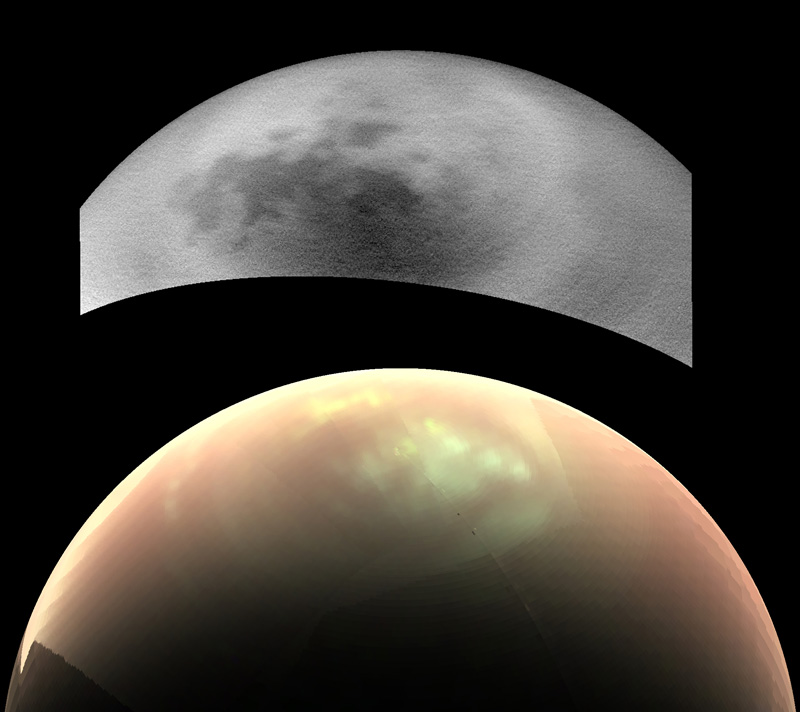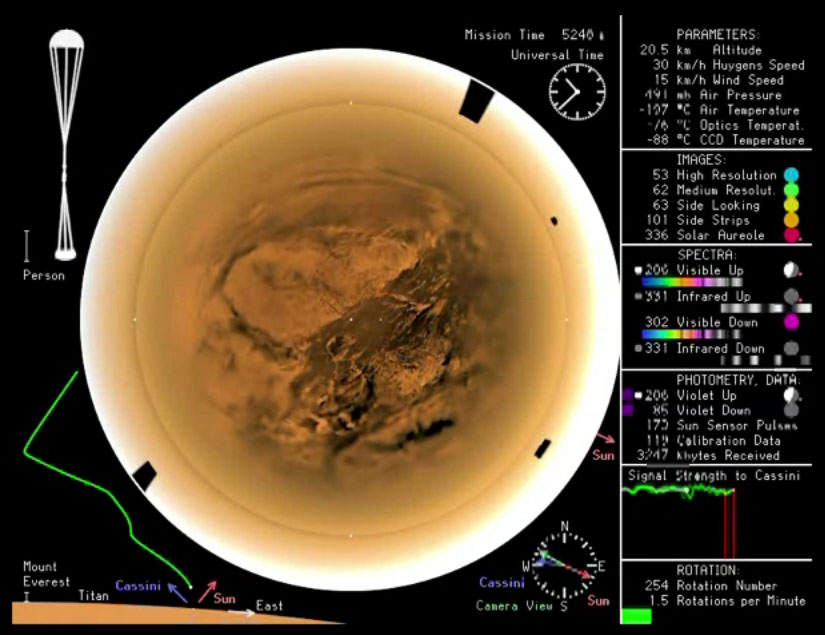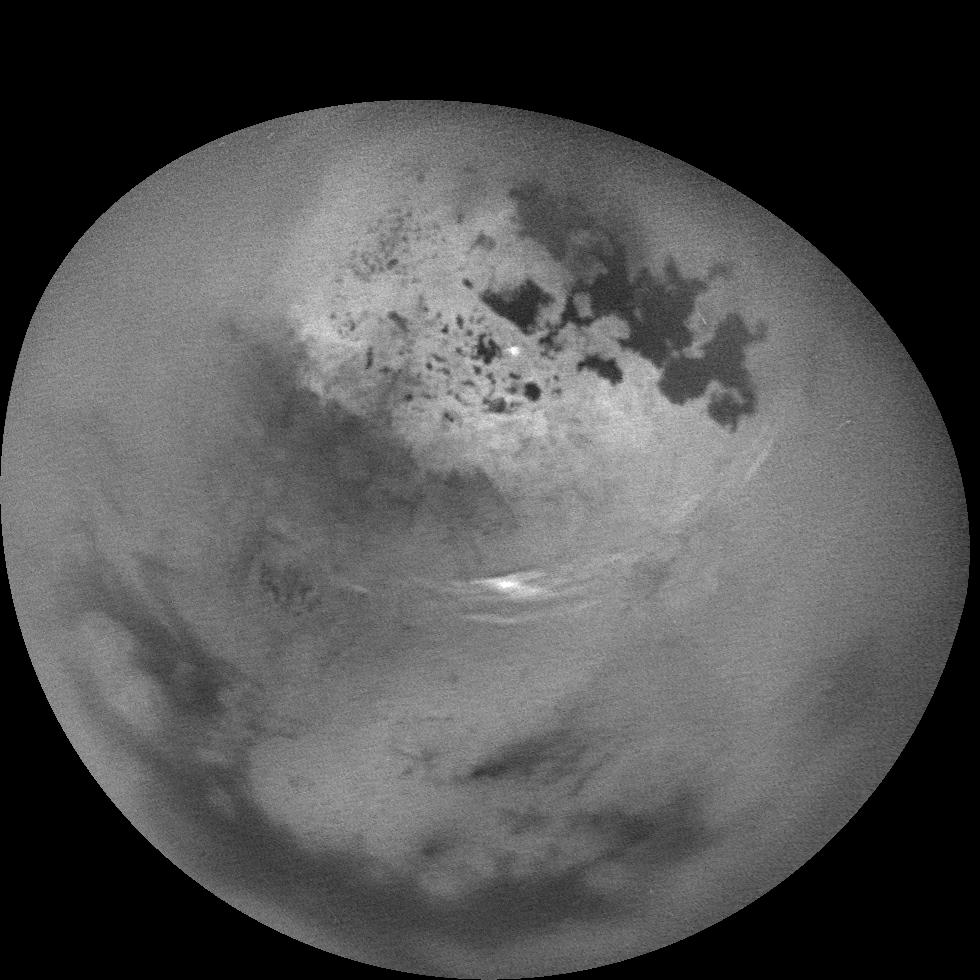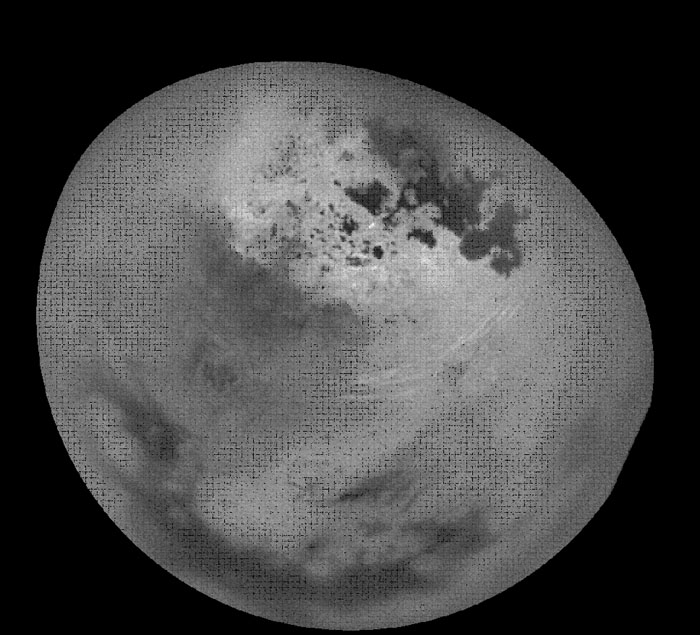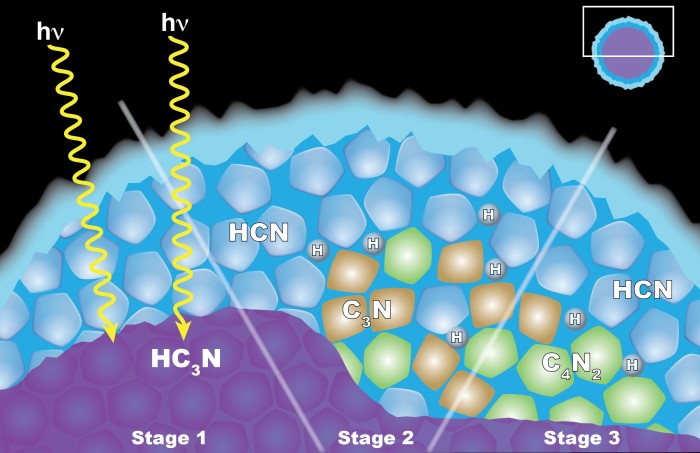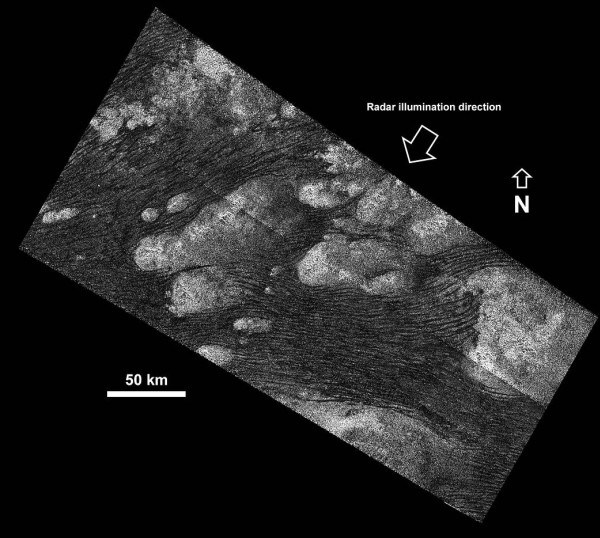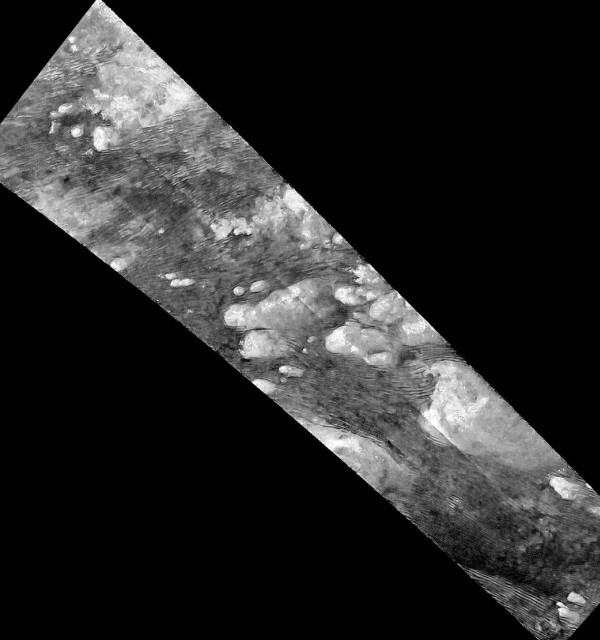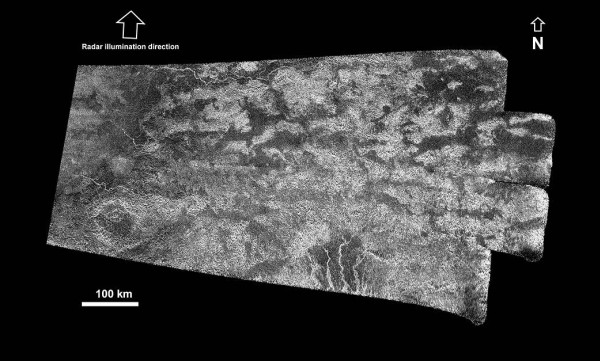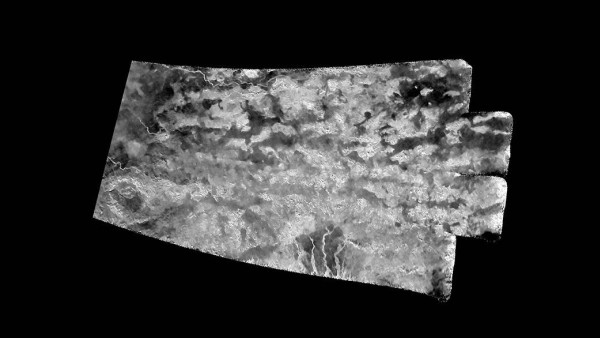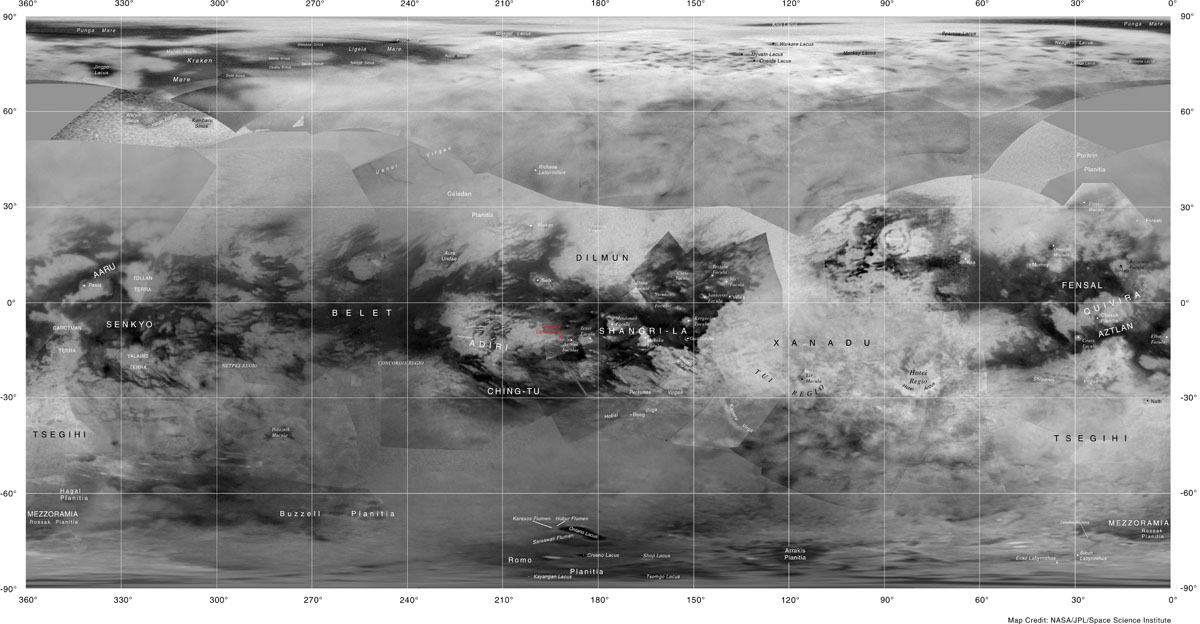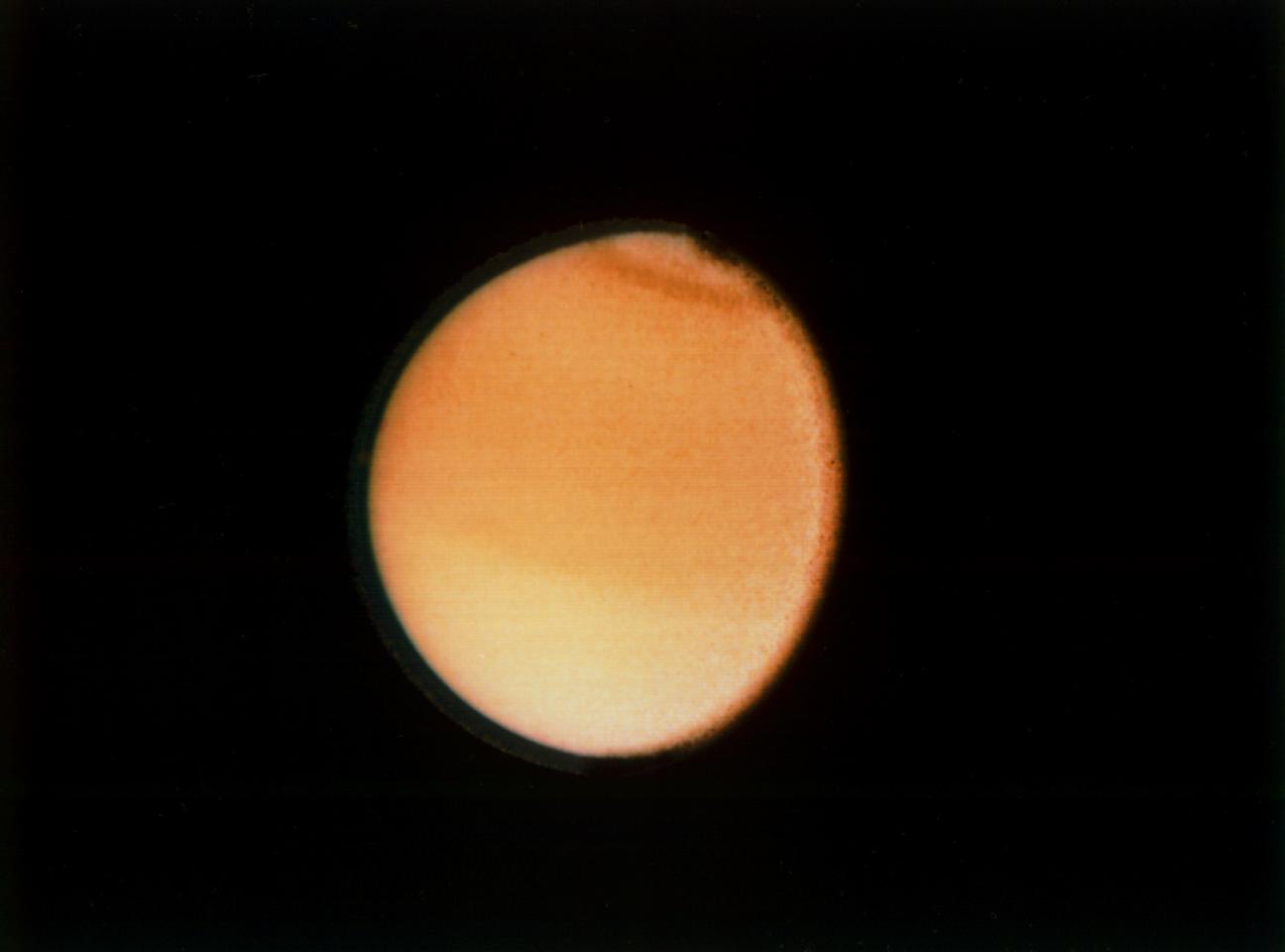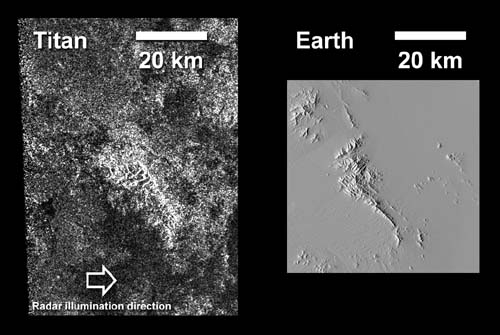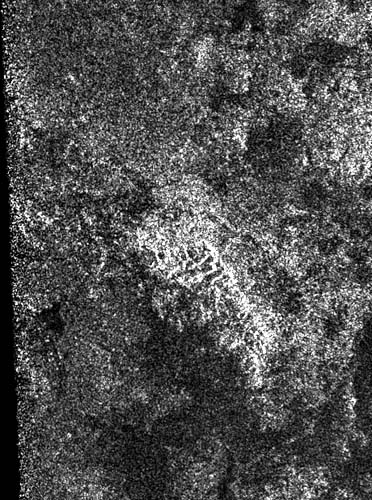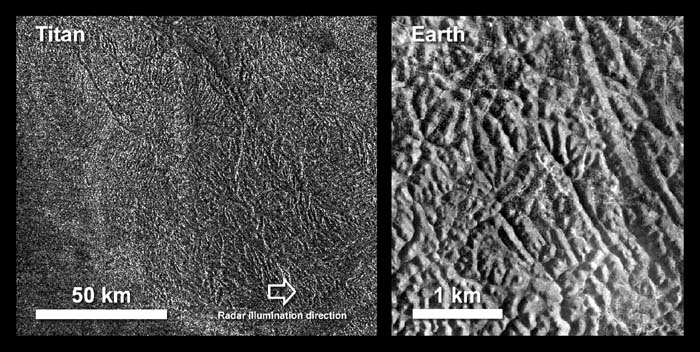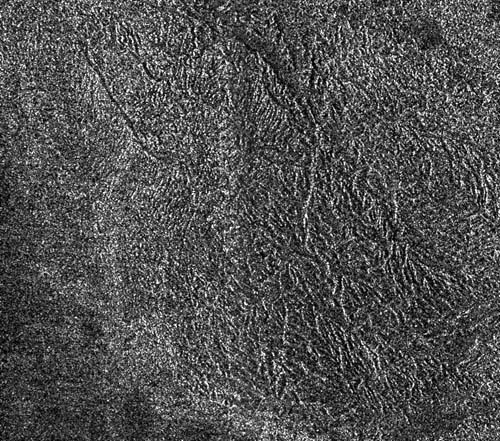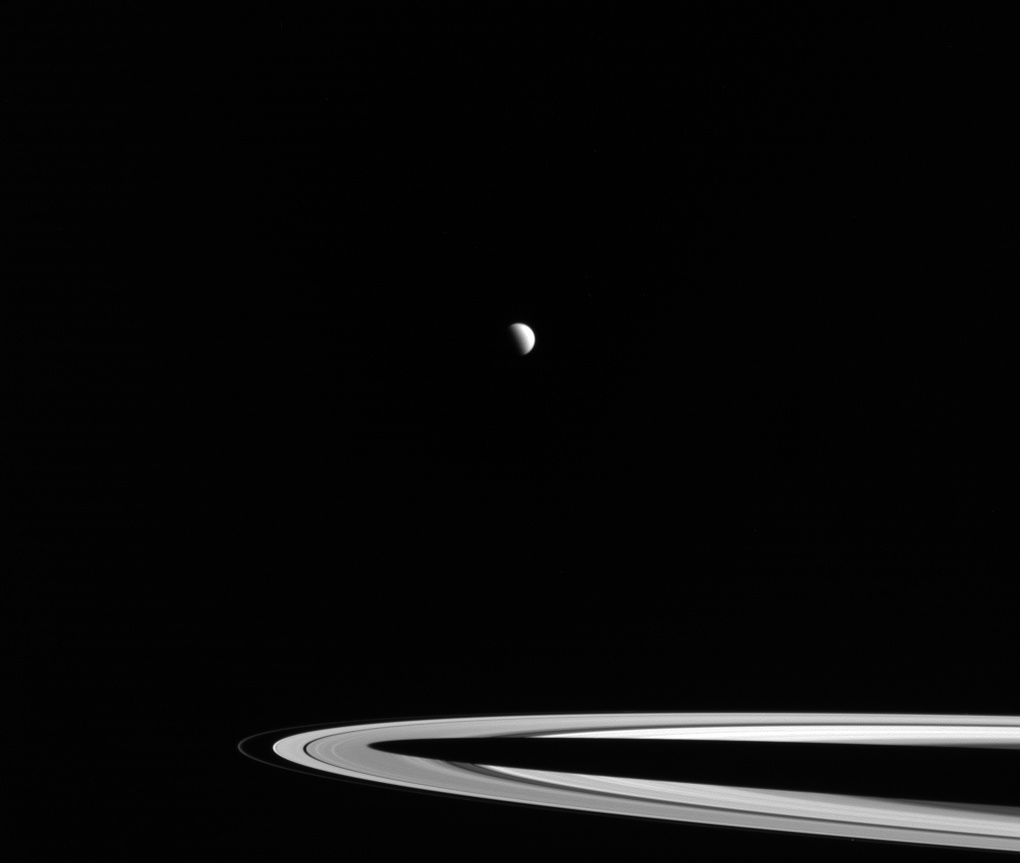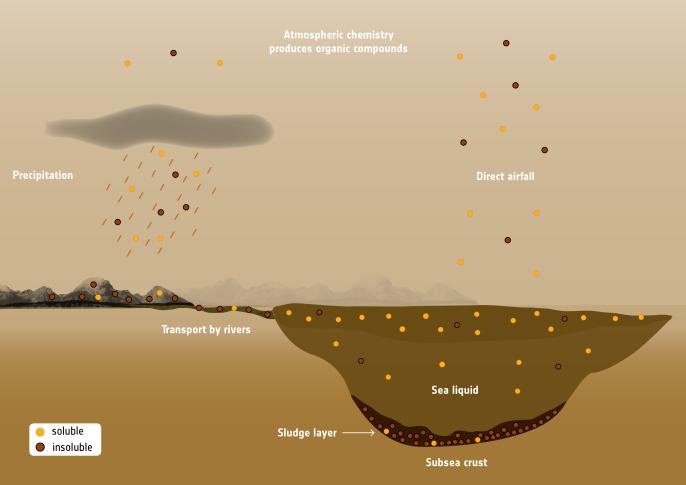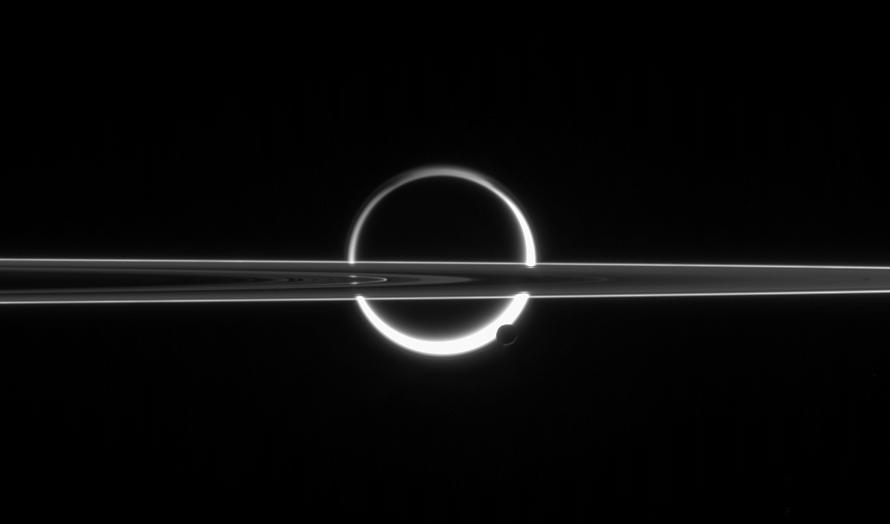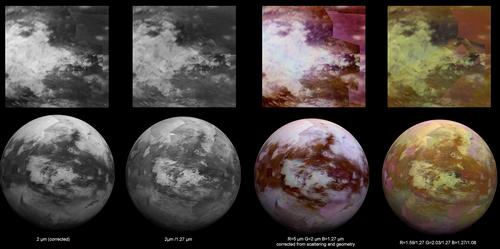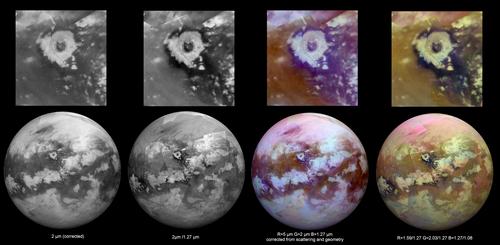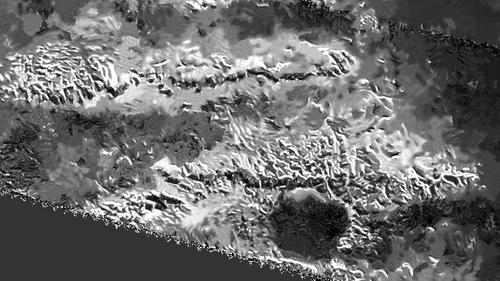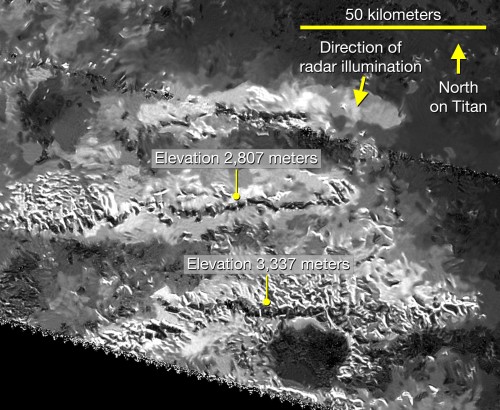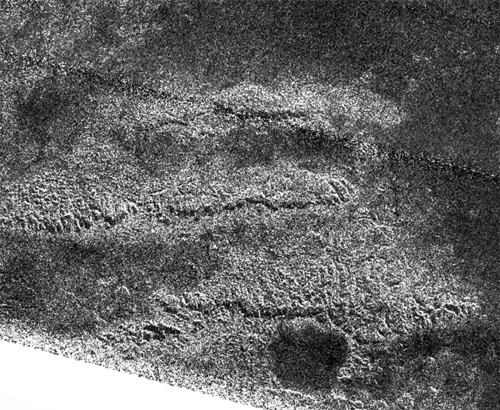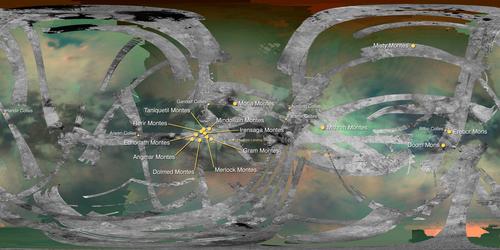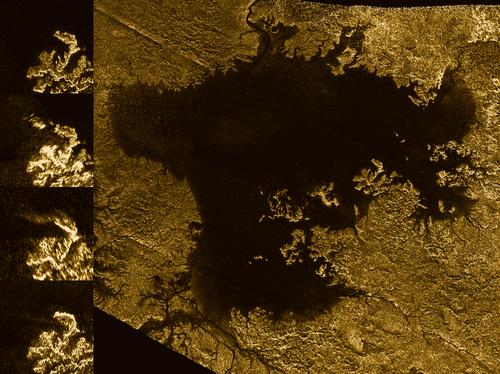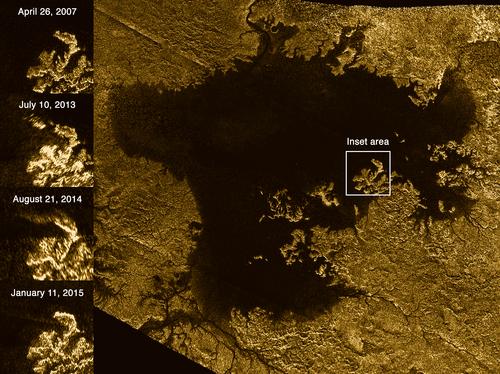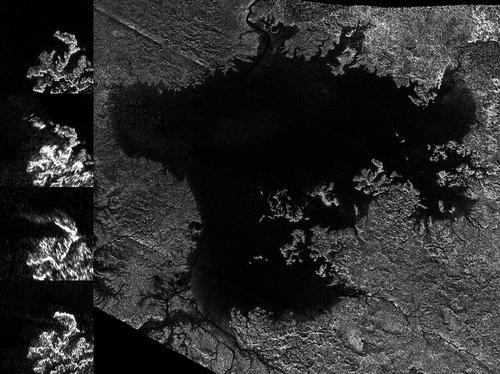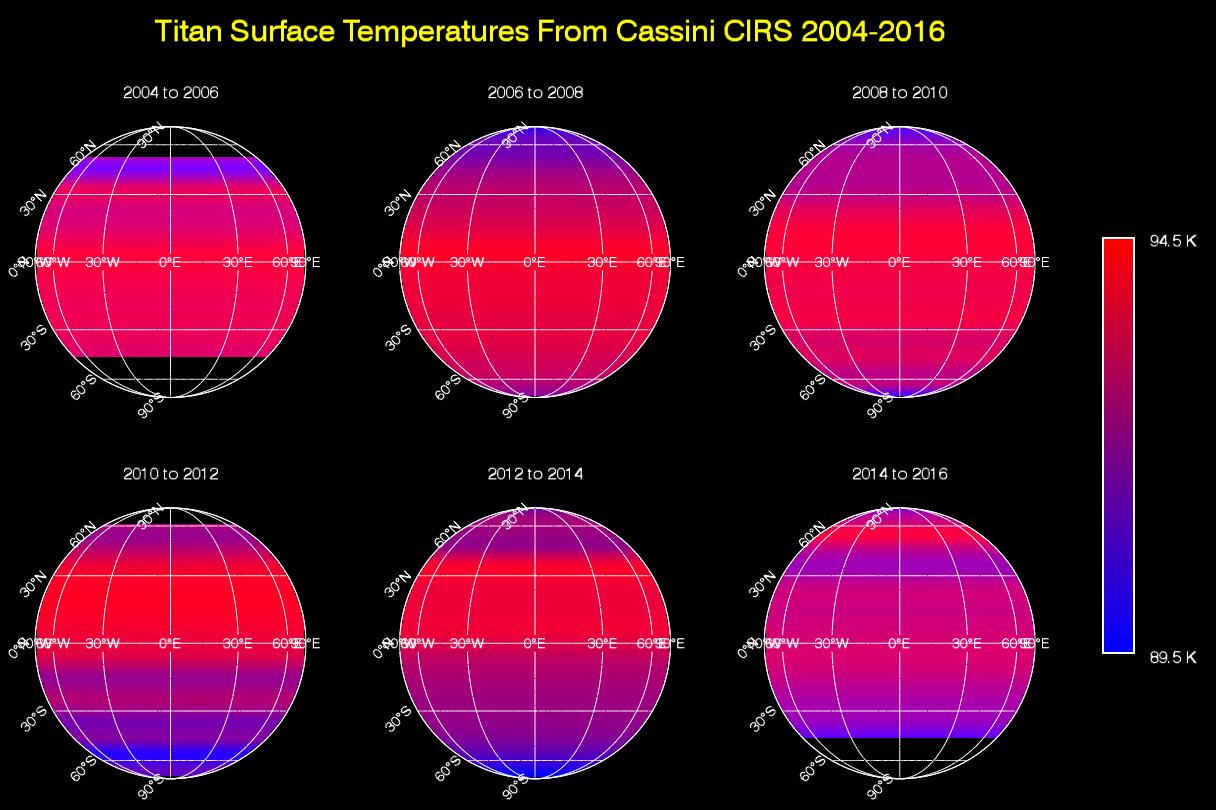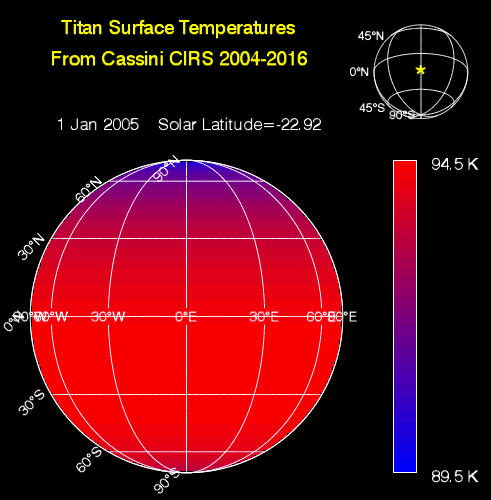| The mosaic above reveals two views of Titan's north polar
region obtained during the T120 Flyby on June 7, 2016 with the Visual And
Infrared
Mapping Spectrometer (VIMS) and on June 8, 2016 with the Imaging Science
Subsystem (ISS). The upper image of Titan in this mosaic represents an
ISS view and the lower image of the Opaque Moon corresponds to a VIMS view.
The Cassini probe was evolving at a distance of approximately 28,000 miles
or 45,000 kilometers from Titan when the VIMS image was taken and at a
distance of about 398,000 miles or 640,000 kilometers when the ISS view
was acquired. The VIMS view has been processed in order to increase the
visibility of the clouds. The colors are artificial. Clouds appear almost
white whereas atmospheric haze appears pink and surface areas unveil a
green color. The clouds can be identified in certain wavelengths, in the near-infrared or infrared wavelengths. The upper view of Titan's northern hemisphere represents a near-infrared image captured from the imaging cameras of the Cassini spacecraft. The clouds appear hard to find. But they are easier to find in the lower view which was obtained at longer infrared wavelengths. A large field of bright clouds can be discerned. Researchers were quite surprised to notice the relative absence or the limited amount of clouds in the upper view. As a result, they have been trying to provide a clear answer to the remarkable difference between both images. The seas or lakes in the upper view can be clearly seen whereas they appear hidden in the lower image. Researchers working on VIMS or ISS views were expecting to find more clouds in the high latitudes of the northern hemisphere as the Winter season approaches and develops in the area on the basis of their atmospheric models and on the basis of observations of the south polar region in 2004 at the end of the Summer season in the southern hemisphere. Dynamic cloud systems had been clearly observed in the high latitudes of the southern hemisphere in the area of the famous lake or sea Ontario Lacus. Scientists want to see, in the coming months, whether there will be an increasing amount of clouds in the high latitudes of the northern hemisphere where most lakes and seas are concentrated on Titan. Scientists managed to obtain, via the Cassini probe, images of high northern latitudes over extended time periods exceeding 24 hours during the "T120" Flyby on June 7, 2016 and the "T121" Flyby on July 25, 2016 enabling the monitoring of the evolution of clouds in the area of lakes and seas. They have been in a position to notice remarkable differences in the way the clouds, the atmosphere or the landscape appear with the ISS and with the VIMS. In the ISS view shown in the upper part of the mosaic, the image is monochrome, surface features can be easily discerned and a limited amount of clouds which are small and isolated can be identified. On the other hand, in the VIMS view unveiling different colors, clouds seem everywhere or widespread in each flyby. The views were acquired in the same period implying that changes in illumination geometry or cloud movements can't account for this radical difference. The VIMS images unveil persistent atmospheric features during the whole observation campaign whereas ISS views unveil very few atmospheric features such as clouds. The radical difference in the way the ISS views and the VIMS views appear may be closely related to the hazy atmosphere of the Orange Moon which is much easier to observe through at the longer infrared wavelengths than at the shorter, near-infrared wavelengths. The VIMS instrument is sensitive to longer infrared wavelengths than the ISS instrument. Thus, the VIMS instrument will study the atmosphere with a spectrum reaching up to 5 microns whereas the ISS instrument will study the soil, the topography, surface features, clouds or the lower atmosphere at lower wavelengths at 0.94 microns. At longer wavelengths, high and thin cirrus clouds can appear thicker or denser than the atmospheric haze. By contrast, however, they can appear thinner than the environmental haze at the shorter wavelength. That's why they can't be seen in the ISS view but they can be clearly noticed in the VIMS view. That's a paradox related to the opaque atmosphere of Titan where a complex chemistry involving organics, haze, fog or clouds occurs. A cloud is always harder to identify on a hazy day and the boundary between a fog blanket and a cloud is not always obvious. The atmospheric phenomenon has not been observed again since July 2016 but the Cassini probe will have new opportunities to observe Saturn's largest moon in the coming months until the end of the mission in 2017. Will there be significant changes in the dynamics and in the amount or concentration of clouds in the high latitudes of the northern hemisphere ? That's a major question that researchers want to answer. Image Credit: NASA/JPL-Caltech/SSI/University of Arizona/University of Idaho. |
